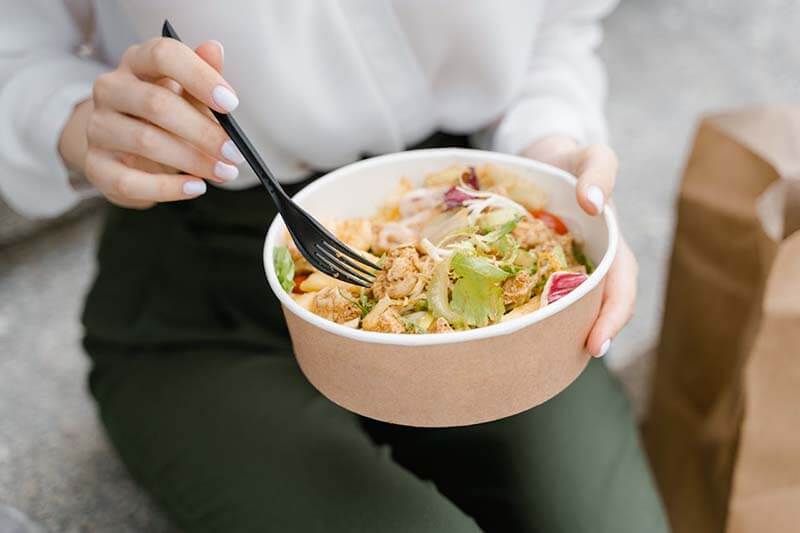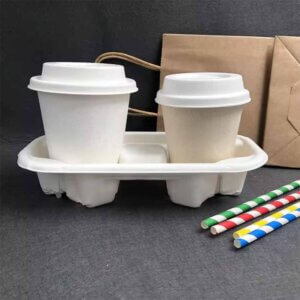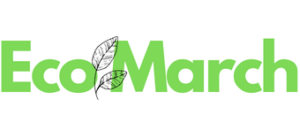Go Green with Sustainable Food Packaging
In today’s society, the topic of sustainability permeates every industry. Whether it is individual or corporate behavior, there is a clear trend towards more environmentally friendly practices. One important area where sustainability can have a profound impact is food packaging.
Impact of Traditional Food Packaging
The traditional packaging is generally made from plastic and non-biodegradable materials, these materials have many negative impacts on the environment. According to many studies, plastics take hundreds of years to decompose, filling up landfills and polluting oceans. The production of these materials will consume large amounts of energy and raw resources, leading to greenhouse gas emissions. In addition, improper disposal can lead to the spread of microplastics, harming wildlife and entering the human food chain, thereby endangering human health.
See more specific data about the disposable food packaging.
Replacing these traditional food packaging with sustainable food packaging is imperative. Today, we will talk about different types of sustainable food packaging solutions and let you have a deep and clear view when choosing environmentally friendly food packaging.

What is Sustainable Food Packaging?
Sustainable food packaging means a packing solution that aims to minimize environmental impact and footprint. This means that food packaging materials and processes are renewable, efficient, and safer for the environment and human health.
Types of Sustainable Food Packaging
When we talk about environmentally friendly food packaging, do you know who are they? Let’s take a look at it in detail.
Biodegradable Packaging
Biodegradable packaging is made from materials that can be broken down naturally by the action of microorganisms and then converted into water, carbon dioxide, and biomass.
Main Materials Used for Biodegradable Packaging
- Cornstarch: This material is derived from corn, and can be made into various shapes for packaging.
- Bamboo: The bamboo is a fast-growing and renewable resource, due to its durability and biodegradability, this material can be used for packaging.
- PLA (Polylactic Acid): PLA is made from fermented plant starch (usually corn), which is a biodegradable plastic.
Pros of Biodegradable Packaging
- They can reduce the landfill waste as it breaks down naturally.
- This material produces a lower carbon footprint compared to traditional plastics.
- These materials are derived from renewable resources.
Cons of Biodegradable Packaging
- They require specific conditions to degrade effectively.
- Can not decompose quickly in natural environments.
- More expensive than traditional plastic.
Compostable Packaging
Compostable packaging is not only biodegradable but also decomposes into nutrient-rich compost under composting conditions.
Main Materials Used for Compostable Packaging
- PLA (Polylactic Acid) Plastics: This plastic is made from fermented plant starch (usually corn), they can break down into compost under industrial composting conditions.
- Bagasse (Sugarcane Fiber): A byproduct of sugarcane processing, used to make sturdy and compostable packaging.
- Other Plant-Based Materials: Materials including cornstarch, wheat straw, and cellulose, which are derived from renewable plant sources. All these materials can be compostable effectively.
Pros of Compostable Packaging
- These materials can be converted into valuable compost, and enrich the soil.
- Reduces landfill waste and pollution.
Cons of Compostable Packaging
- Need to use industrial composting facilities.
- It has high requirements for the home composting system, otherwise it cannot be effectively decomposed.
- More expensive than traditional packaging.
Recyclable Packaging
Recyclable packaging means they can processed and transformed into new products or materials by recycling programs.
Main Materials Used for Recyclable Packaging
- Paper: Includes cardboard, paperboard, and paper wraps.
- Glass: Bottles, jars, and containers.
- Certain Plastics: PET (Polyethylene Terephthalate), HDPE (High-Density Polyethylene).
- Metals: Aluminum cans, tin cans.
You may also be interested in the food-grade plastic.
Pros of Recyclable Packaging
- Using recyclable packaging can reduce the need for virgin raw materials.
- Reducing the need for virgin raw materials can lower energy consumption and greenhouse gas emissions.
- Can be reused multiple times in new products.
Cons of Recyclable Packaging
- Need well-established recycling infrastructures.
- If the packaging itself is contaminated, it will reduce the efficiency of recycling.
- Not many areas have sophisticated recycling equipment.
Reusable Packaging
Reusable packaging can be used multiple times, reducing the need for single-use packaging.
Main Materials Used for Reusable Packaging
- Glass Jars: Used to store food and beverages.
- Metal Containers: Durable and suitable for multiple uses.
- Cloth Bags: Suitable for grocery shopping and carrying items.
- Sturdy Plastic Containers: They are designed for repeated use in food storage and transport.
Pros of Reusable Packaging
- Reduces the use and waste of single-use packaging.
- Cost-effective over the long term.
- Promotes circular economy.
Cons of Reusable Packaging
- The whole nation needs to participate to reduce the use of single-use packaging.
- You need to clean and wash them.
- The initial cost is higher than disposable products.
Innovative Packaging Solutions
- Edible Packaging: This packaging is made from seaweed, rice paper, or starch-based materials. You can eat the packaging with the food together, they are safe for humans.
- Plant-Based Packaging: This packaging is made from agricultural byproducts like wheat straw, coconut husk, or mushroom mycelium. They are renewable, biodegradable, and compostable.
- Smart Packaging: This packaging is embedded with sensors or indicators to monitor the freshness, temperature, or integrity of the product. This could improve product safety and shelf life.

Benefits of Sustainable Food Packaging
When we talk about the benefits of eco friendly food packaging, we should consider 3 points: environmental benefits, health benefits, and economic benefits.
Environmental Benefits
- Landfill Reduction: The materials used to make sustainable packaging for food are generally biodegradable and compostable. These materials can minimize the volume of waste sent to landfills and reduce the long-term environmental burden.
- Reduce Plastic Pollution: Using the biodegradable food packaging to replace the traditional plastic material can significantly reduce plastic pollution in oceans and other ecosystems.
- Requires Fewer Resources: Compared to the production of plastic and metal, sustainable packaging materials less energy and resources.
- Releases Fewer Greenhouse Gases: The sustainable packaging can break down more efficiently and release less greenhouse gas emissions.
- Reducing the Use of Fossil Fuels: The materials used to make eco-friendly food packaging are renewable, such as bamboo, cornstarch, and bagasse. This can reduce the use of fossil fuels on Earth.
Health Benefits
- Non-Toxic Materials: The sustainable packaging used does not contain BPA (Bisphenol A) and phthalates, which exist in traditional plastic and will leach into food and pose health risks.
- Safer Decomposition: The biodegradable and compostable materials can break down into natural, non-toxic components, this reduces the potential risks to release the harmful chemical into the environment.
- Safe to Eat: The sustainable packaging can be designed to contact the food directly, this could reduce the risk of contamination and ensure that food remains fresh and safe to consume.
- Create a Healthier Environment: By reducing pollution and waste, sustainable packaging contributes to a healthier environment overall, which could also benefit public health.
Economic Benefits
- Reduced Waste Management Costs: Businesses and municipalities can save on waste management and disposal costs by using packaging that is easier and cheaper to compost.
- High Efficiency in Production: Over time and as technology improves, the cost of sustainable packaging becomes more cost-effective to produce, leading to lower sales prices, benefiting both manufacturers and consumers.
- Attract Green Consumers: Consumers in modern society are becoming more and more environmentally conscious, and they are more willing to choose brands that take sustainability into consideration.
- Market Differentiation: Using sustainable packaging for food to pack your product will differentiate you from your competitors and make your products more competitive in the market.
Challenges in Adopting Sustainable Food Packaging
In the past, whether in the food industry or other industries, packaging materials were mainly plastic, which is why global white garbage pollution is so serious. Now that sustainable food packaging is advocated, what challenges will it face?
- Material Cost: Compared with the traditional plastics that were widely used in the past, biodegradable plastics and plant-based fibers are more expensive.
- Lack of Understanding: Many consumers are still not familiar with the difference between biodegradable, compostable, and recyclable packaging. They also don’t know how to properly dispose of these materials.
- Behavioral Change: Some consumers are not aware of the impact of disposable food packaging on the environment, and they still habitually choose the environmentally unfriendly packaging they have been using in the past, which also poses a challenge to the popularization of environmentally friendly packaging.
- Market Penetration: Not all countries or regions encourage the use of sustainable food packaging, and some countries do not have mature industrial composting facilities/recycling facilities, which limits the entry of these packages into their markets.
Eco March is the manufacturer of molded fiber packaging in China. You can customize various packaging from us, not only for the food industry but also for other different industries. Contact us Today to get your packing solution!
You may also interested in:
The ultimate guide about custom packaging

John Q
John Q is Eco March’s Product Manager. With 5 years of prior experience in the food industry after graduating from university, he has been an integral part of Eco March. He excels in creating and developing eco-friendly food packaging products with a keen focus on enhancing the consumer experience.


